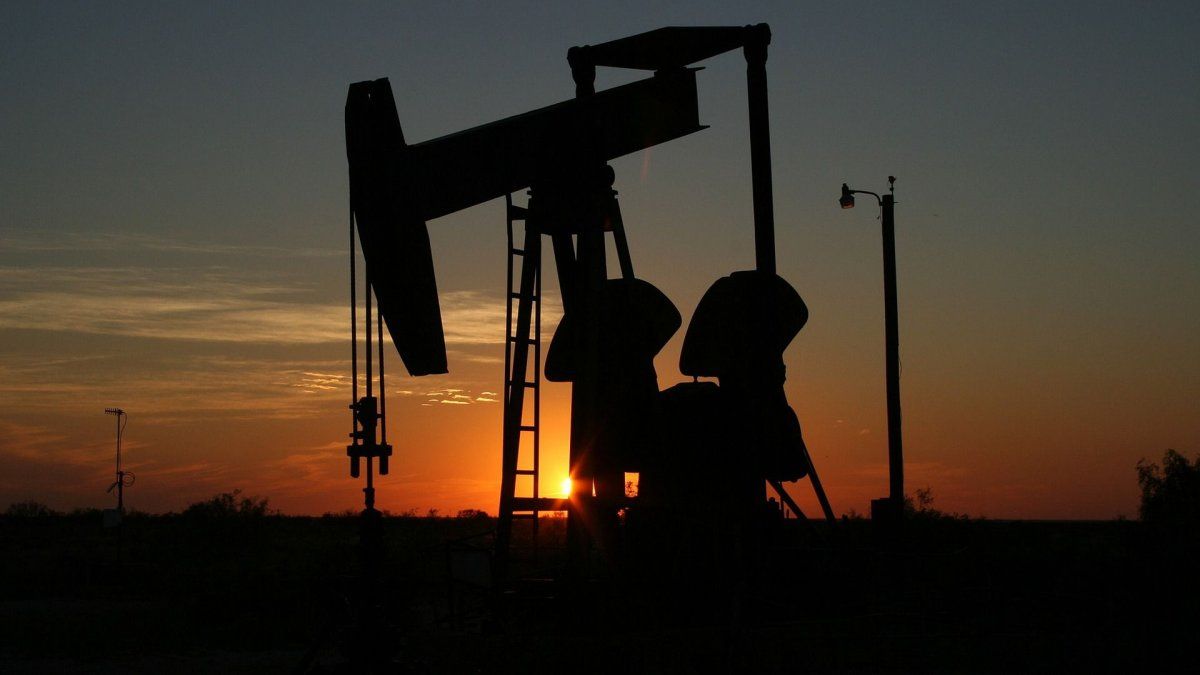He fuel shortage that was recorded in the last hours In various areas of the country it continues to give rise to discussion, both by the Government and the companies that make up the sector. In the last few hours, the Secretary of Energy, Flavia Royón, met with representatives of the refining companies to increase refining capacity, in addition to enabling the import of ten ships of fuels that should mitigate the lack.
However, the scenario is more complex. To what extent can we think that the shortage is a consequence of the freezing of gasoline? What relationship can be inferred with the drop in fuel production and refining experienced in recent months by companies? A preview of the answer: When you look at the gasoline and diesel production graph, you see a drop in refining volumes throughout the park, even before the price freezedespite the fact that industrial production had a recovery.
The argument of companies and prices
Under the title “Refineries and the supply of the domestic fuel market”YPF, Raízen (Shell brand), Trafigura (Puma) and Axion maintained that “regarding the current supply situation of the fuel system, which will normalize in the coming days, we want to point out that “He himself has experienced a series of events in recent days that have stretched him to the limit of his capacity.”. Among the causes, they maintained that “extraordinary levels of demand were experienced, especially in the last 15 days – long weekend, elections where there is a peak in mobility of people”the “beginning of agricultural planting”, “a greater dependence than usual on fuel imports due to scheduled shutdowns in some refineries” and “an excess demand generated by an expectation of shortages.”
There are those who have suggested that the shortage has to do with the freezing of prices since the end of August and the gap that this creates for companies. However, it goes without saying that Fuels did register some increases from the moment the Government authorized a post-passage (from 12%). Only YPF kept the price at the pump unchanged with the exception of the 3 percent increase last Monday. The rest of the refiners (PAE, Raízen and Trafigura) applied at least three increases of 2.5 percent.
Production in recent months
There are several official data on gasoline and diesel production that show a fall on the part of the country’s main refineries. For example, the La Plata Refinery (YPF) produced 564 thousand cubic meters of fuel in the month of August of this year, 12% less than in the month of July and 8% less than in the same month last year. The Luján de Cuyo Refinery registers the same decline, 9.6% against July and 19.2% against August 2022. Both Dock Sud and the Campana Refinery have also experienced declines. For the first case, 5% and 15% and for the second, 9.6% and 5.4%. What’s more: in the case of the Luján de Cuyo, Dock Sud and Campana refineries, the figures are also negative when compared to August 2021.
In this sense, an analysis of the activity curves also reflects something to keep in mind. According to information from Indec, While the manufacturing Industrial Production Index has experienced a significant increase between July and August, the activity indicator linked to the level of oil refining has registered a decrease in the same proportion.
One more element to keep in mind is that, in the case of companies that import fuels, it is possible to think that The official exchange rate and the price at the pump play a relevant rolesince it is a product in dollars that is sold in pesos, which companies seek to rationalize to avoid assuming higher costs.
The case of Oil Combustibles and the San Lorenzo Refinery
It is also advisable to think about whose responsibilities are for what is happening today. Related to the number of refineries, it could be evaluated whether, in the case of the San Lorenzo Refinery, now abandoned, there is an element to take into account based on some irregular management.
The persecution suffered by the Indalo Group has become public knowledge from the end of 2016 and until 2019. An important chapter was the dispossession of the assets of Oil Combustibles, where revelations came to light about the maneuvers carried out by the leadership of YPF with the illegally acquired assets. Among them, the San Lorenzo Refinery, with the capacity to supply 8% of Argentina’s liquid fuels.
Said asset was sold at a low price in a process full of vices and irregularities led by the fugitive from justice Fabián Rodríguez Simón, in his dual role as a member of the Macrista judicial panel and director of YPF. To this must be added an aggravating factor: the dismissal of thousands of workers who were employed at the Oil Combustibles service stations and the network of sales points nationwide, which was handed over at a low price to other companies. Why was the San Lorenzo Refinery allowed to fall into abandonment? What was the purpose of the dispossession of that asset belonging to Oil Combustibles, if once dispossessed it was left completely abandoned?
The freezing argument: yes or no?
There are several market data that could weaken the discussion related to the recent freeze. On the one hand, from the analysis of the historical price measured in cubic meters per dollar it can be inferred that The oscillation of fuel prices in the domestic market, in hard currency, has fluctuated over recent years within a limited range of prices. That is to say, from the analysis, it could be inferred that there are no major disparities between the years.
Another point to keep in mind is thatIn the last 10 years, only two major shortages have been recorded. Last year due to the lack of diesel and this year. But, if prices have fluctuated in a marginal range and even during this year they accompanied international prices throughout the first half of the year:Why think that the shortage is related to the price freeze?
Add in this sense another element to keep in mind: The cost of fuel and the companies’ margin is not the last component of the price, since biofuels and taxes have an important weight in the value at the pump and both were “intervened” by the State to prevent companies from giving up their margin. .
Creole barrel and after
It is known that, within the framework of the pricing policy, The Government and the oil companies agree on a value for the production of the Creole barrel, which allows production firms to maintain profitability and sustain investments (in both good times and bad); and to the refining sector, produce fuels at competitive costs. In terms of balance, it could be thought that this policy of a price for the Creole barrel causes the producing companies to lose value on the one hand (they produce at a price below the international one), but it is compensated with exports at significantly higher prices with some production costs in pesos.
YPF and supply
In the specific case of YPF, its vertical integration (produces and refines) allows it to perfectly compensate business prices to achieve an overall positive profit for the company. In theory, when one business has lower profitability, it should offset that by increasing the profitability of the other business or businesses. Doesn’t YPF, as a company with 51% State participation, have the obligation to keep its station channel supplied correctly, regardless of the price situation?
Source: Ambito




